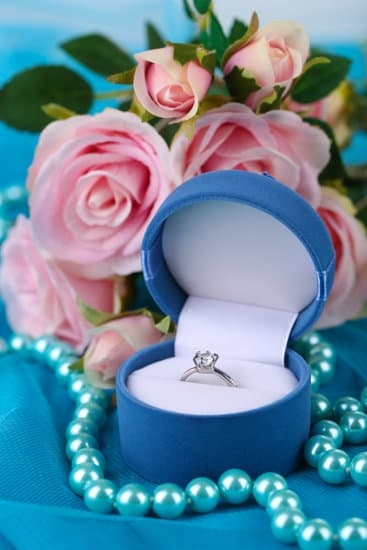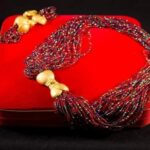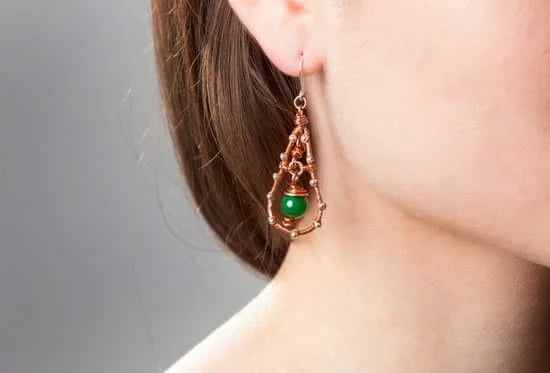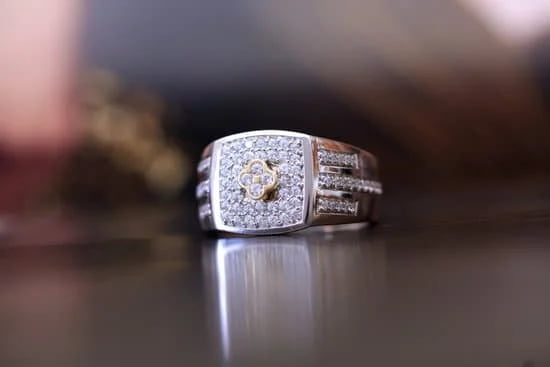The history of cameo jewelry dates back to ancient times, with its origins rooted in the rich cultural traditions of various civilizations. From its early beginnings to its enduring allure today, cameo jewelry has played a significant role in fashion, art, and cultural symbolism.
In this article, we will explore the origins and evolution of cameo jewelry, its significance in different cultures and time periods, the intricate process of carving cameos, famous figures and events depicted in these pieces, as well as tips for collecting and caring for this exquisite form of jewelry.
Cameo jewelry has a fascinating history that spans centuries and is steeped in tradition. The earliest known examples of cameo carving can be traced back to ancient Greece and Rome, where it was highly prized for its beauty and craftsmanship. Over time, cameo jewelry has evolved to encompass a wide range of styles and techniques, becoming a favorite adornment for both men and women across different cultures.
Throughout history, cameo jewelry has held great significance in various societies, often serving as a symbol of power, wealth, or religious devotion. From royal portraits to mythological scenes, cameos have depicted a wide array of subjects that are reflective of the cultural values and historical events of their time. Today, collectors continue to be captivated by their timeless beauty and historical significance.
The Evolution of Cameo Jewelry
Cameo jewelry has a rich and fascinating history that stretches back thousands of years. From its early origins to its modern interpretations, the evolution of cameo jewelry provides a captivating look into the artistry and cultural significance of this unique form of adornment.
The Origins of Cameo Jewelry: Exploring Its Early Beginnings
The history of cameo jewelry can be traced back to ancient civilizations such as ancient Egypt, Greece, and Rome. These early cameos were typically carved from materials such as shell, stone, or glass, and often depicted mythological figures or scenes. The intricate craftsmanship and attention to detail displayed in these ancient cameos set the stage for the enduring appeal of this art form.
The Evolution of Cameo Jewelry: From Ancient Times to Modern Day
Over time, cameo jewelry continued to evolve, with different cultures putting their own unique spin on this art form. During the Renaissance, for example, cameos became popular among European aristocracy, with skilled artisans using techniques such as relief carving to create stunning pieces that showcased both classical themes and contemporary designs.
In modern times, cameo jewelry has remained a beloved form of adornment, with artists and designers continuing to push the boundaries of creativity while honoring the traditions of the past.
- Ancient civilizations such as Egypt, Greece, and Rome
- The Renaissance period in Europe
- Modern interpretations by contemporary artists and designers
From its humble beginnings in antiquity to its current status as a timeless fashion statement, cameo jewelry has maintained its allure and relevance throughout history. Today, cameos continue to captivate audiences with their exquisite beauty and historical significance, making them a cherished treasure for collectors and enthusiasts alike.
Whether worn as a personal accessory or displayed as a work of art, cameo jewelry serves as a poignant link between the past and the present, showcasing the enduring legacy of this remarkable art form.
Throughout different time periods and cultural movements alike, cameo jewelry has held steadfast in its place as an enduring symbol of beauty and craftsmanship. Its evolution over thousands of years demonstrates not only the skillful artistry involved in creating these pieces but also their ability to transcend time and connect people across generations.
The Significance of Cameo Jewelry in Different Cultures and Time Periods
Cameo jewelry has been a significant cultural and historical symbol throughout different civilizations and time periods. The use of cameo jewelry dates back to ancient times, with its origins rooted in Greek and Roman culture. In these societies, cameo jewelry was a symbol of power, wealth, and social status. The intricate carvings on the cameos often depicted gods, goddesses, and important figures from mythology or history.
Symbolism in Different Cultures
In addition to its significance in ancient Greece and Rome, cameo jewelry has held cultural importance in various other regions around the world. In Victorian England, cameo jewelry was popularized as a symbol of romantic love and sentimentality. Additionally, during the Renaissance period in Italy, cameo jewelry became associated with religious imagery and was often used as a form of personal expression for individuals.
Timeless Symbol of Elegance
Throughout history, cameo jewelry has continued to be a timeless symbol of elegance and sophistication. From the Art Nouveau period to the Art Deco era, cameo jewelry remained popular among royalty and high society as a coveted accessory. Its enduring appeal has transcended time periods and continues to be revered by collectors and enthusiasts today.
Representation of Cultural Heritage
In more recent times, cameo jewelry is not only valued for its aesthetic beauty but also for its representation of cultural heritage. In many cultures, including Italian and French traditions, owning a piece of cameo jewelry is seen as a way to connect with one’s roots and preserve cherished customs. This has contributed to the ongoing popularity and appreciation for this unique form of adornment across different cultures worldwide.
The Intricate Process of Carving Cameos
Cameo jewelry is known for its intricate designs and detailed carvings, making it a truly unique art form. The process of carving cameos has been a revered artistry that dates back to ancient times. One of the most common materials used for carving cameos is shell, particularly conch shell, which allows for fine details to be etched into the surface.
The process of carving a cameo involves several meticulous steps, beginning with selecting the right piece of material, often a shell or stone, and then carefully outlining and shaping the design. The artisan then uses special carving tools to meticulously etch away at the surface, creating a raised relief that forms the image. This delicate work requires precision and skill, as any wrong move could ruin the entire piece.
To create a multi-layered cameo with contrasting colors, such as white on black or vice versa, the artisan carefully carves away at different layers of the material to reveal the desired design. This painstaking process can take hours or even days to complete, depending on the complexity of the design. Once carved, the cameo may undergo additional processes such as polishing and mounting before it is ready to be worn as jewelry.
While modern technology has made some aspects of cameo carving more efficient, many artisans still honor traditional techniques and hand-carving methods that have been passed down through generations. The artistry involved in carving cameos demonstrates an incredible level of skill and dedication, making each piece a true work of art.
- The selection of materials for cameo jewelry
- Outlining and shaping the design
- Carving tools used for creating cameos
Famous Figures and Events Depicted in Cameo Jewelry
Throughout history, cameo jewelry has been used to depict famous figures and events, making it an important medium for historical representation. From ancient times to the present day, cameos have been used to showcase notable individuals and significant moments in time.
Depiction of Historical Figures
One of the most common uses of cameo jewelry is to depict historical figures. From rulers and political leaders to artists and writers, cameos have been used to immortalize important personalities. For example, during the Renaissance period, cameos featuring portraits of rulers such as Queen Elizabeth I and King Henry VIII were popular among the aristocracy.
Representation of Historical Events
Cameo jewelry has also been utilized to commemorate significant events in history. For example, during the Victorian era, cameos were often carved to depict scenes from mythology, classical literature, or current events. In more recent times, cameos have been created to commemorate major historical milestones such as wars, revolutions, and space exploration.
The Symbolism Behind Historical Representations
The use of famous figures and events in cameo jewelry is not merely decorative; it also carries symbolic significance. By wearing a cameo depicting a particular historical figure or event, individuals connect themselves with that person or moment in history. It serves as a way to honor or remember important individuals and periods while also expressing personal identity and values through the choice of representation.
The history of cameo jewelry is rich with depictions of famous figures and events that offer insight into different cultures and time periods. This aspect of cameo jewelry continues to be a popular choice for collectors who appreciate its historical significance and artistry.
The Popularity of Cameo Jewelry
The history of cameo jewelry reveals that its popularity has ebbed and flowed throughout the decades, often aligning with fashion trends of the time. In the 18th and 19th centuries, cameo jewelry experienced a surge in popularity as part of the Neoclassical revival, influenced by archaeological discoveries in Italy and Greece.
During this time, wealthy Europeans embarked on Grand Tours of Europe to immerse themselves in classical art and culture, leading to an increased demand for cameo jewelry as a fashionable souvenir.
In the mid-20th century, cameo jewelry saw a resurgence in popularity as Hollywood actresses and other celebrities began wearing it, sparking a trend that filtered down to the masses. This period also saw an increased interest in vintage and antique jewelry, further fueling the demand for cameo pieces.
In recent years, cameo jewelry has once again made a comeback on the fashion scene. Designers have incorporated cameo motifs into their collections, appealing to consumers looking for unique and timeless accessories. With the rise of sustainable and ethical fashion practices, there has also been a growing appreciation for vintage and antique cameo jewelry as eco-friendly alternatives to mass-produced contemporary pieces.
| Decade | Pop Culture Influence |
|---|---|
| 18th-19th Centuries | Neoclassical revival and Grand Tours fueled demand for souvenir cameo jewelry |
| Mid-20th Century | Hollywood celebrities popularized cameo jewelry; increased interest in vintage pieces |
| 21st Century | Cameo motifs incorporated into designer collections; rising interest in sustainable fashion |
Collecting and Caring for Cameo Jewelry
Cameo jewelry has a rich and fascinating history that dates back to ancient times, making it a captivating and highly sought-after collectible for enthusiasts. For those who are interested in starting their own collection of cameo jewelry, there are important factors to consider in both collecting and caring for these exquisite pieces.
When it comes to collecting cameo jewelry, enthusiasts should first familiarize themselves with the different types of cameos available. This includes understanding the distinction between shell cameos, stone cameos, and glass cameos, as well as being able to identify the various carving techniques used. It is also essential for collectors to educate themselves on the historical significance of cameos, as certain motifs and styles may hold more value and interest than others.
Moreover, caring for cameo jewelry is crucial in preserving its beauty and longevity. Due to their delicate nature, cameo pieces should be handled with extreme care to prevent any damage or deterioration. Proper storage in a protective case or pouch away from other jewelry can help prevent scratches or chips. Additionally, it is advisable to avoid exposing cameo jewelry to direct sunlight or harsh chemicals that can cause discoloration or erosion.
For enthusiasts looking to expand their collection of cameo jewelry, attending reputable antique fairs or auctions can provide an opportunity to acquire unique and valuable pieces. Engaging with knowledgeable dealers and connecting with other collectors can also offer valuable insights into the world of cameo jewelry collecting.
| Collecting Cameo Jewelry | Caring for Cameo Jewelry |
|---|---|
| Understand different types of cameos | Handle with care |
| Educate on historical significance | Proper storage |
| Attend antique fairs for unique pieces | Avoid direct sunlight and harsh chemicals |
The Enduring Allure of Cameo Jewelry
In conclusion, the history of cameo jewelry is one that spans centuries and continues to captivate audiences today. From its early origins in ancient times to its popularity as a fashion trend throughout the decades, cameo jewelry has evolved and adapted to different cultures and time periods. The intricate process of carving cameos has unveiled the artistry and craftsmanship involved in creating these timeless pieces.
Throughout history, famous figures and events have been depicted in cameo jewelry, adding to the significance and historical representations found in these pieces. The enduring allure of cameo jewelry can be attributed to its ability to connect the past with the present, as well as its timeless elegance and beauty.
For enthusiasts interested in collecting and caring for cameo jewelry, there are tips available for preserving these precious artifacts. Despite changing fashion trends, cameo jewelry continues to maintain its popularity and remains a sought-after accessory for many individuals. As we look back at the evolution and significance of cameo jewelry, it is evident that its enduring allure will continue to fascinate audiences for generations to come.
Frequently Asked Questions
What Is the Origin of Cameo Jewelry?
Cameo jewelry has its origins in ancient Greece, where it was initially made from precious gemstones. The art form spread to Rome and became popular during the Renaissance period, with shell cameos being a common material.
What Does the Cameo Jewelry Symbolize?
Cameo jewelry often symbolizes themes of love, beauty, and mythology. The images carved into the cameo can represent various symbols and stories, such as profiles of loved ones or allegorical figures.
How Can You Tell How Old a Cameo Is?
Determining the age of a cameo jewelry piece involves examining the materials used, the style of carving, and the setting. Antique cameos are typically made from natural materials like shell or stone and may show signs of wear or aging. Additionally, examining any hallmarks or maker’s marks can provide clues to its age.

Welcome to my jewelry blog! My name is Sarah and I am the owner of this blog.
I love making jewelry and sharing my creations with others.
So whether you’re someone who loves wearing jewelry yourself or simply enjoys learning about it, be sure to check out my blog for insightful posts on everything related to this exciting topic!





